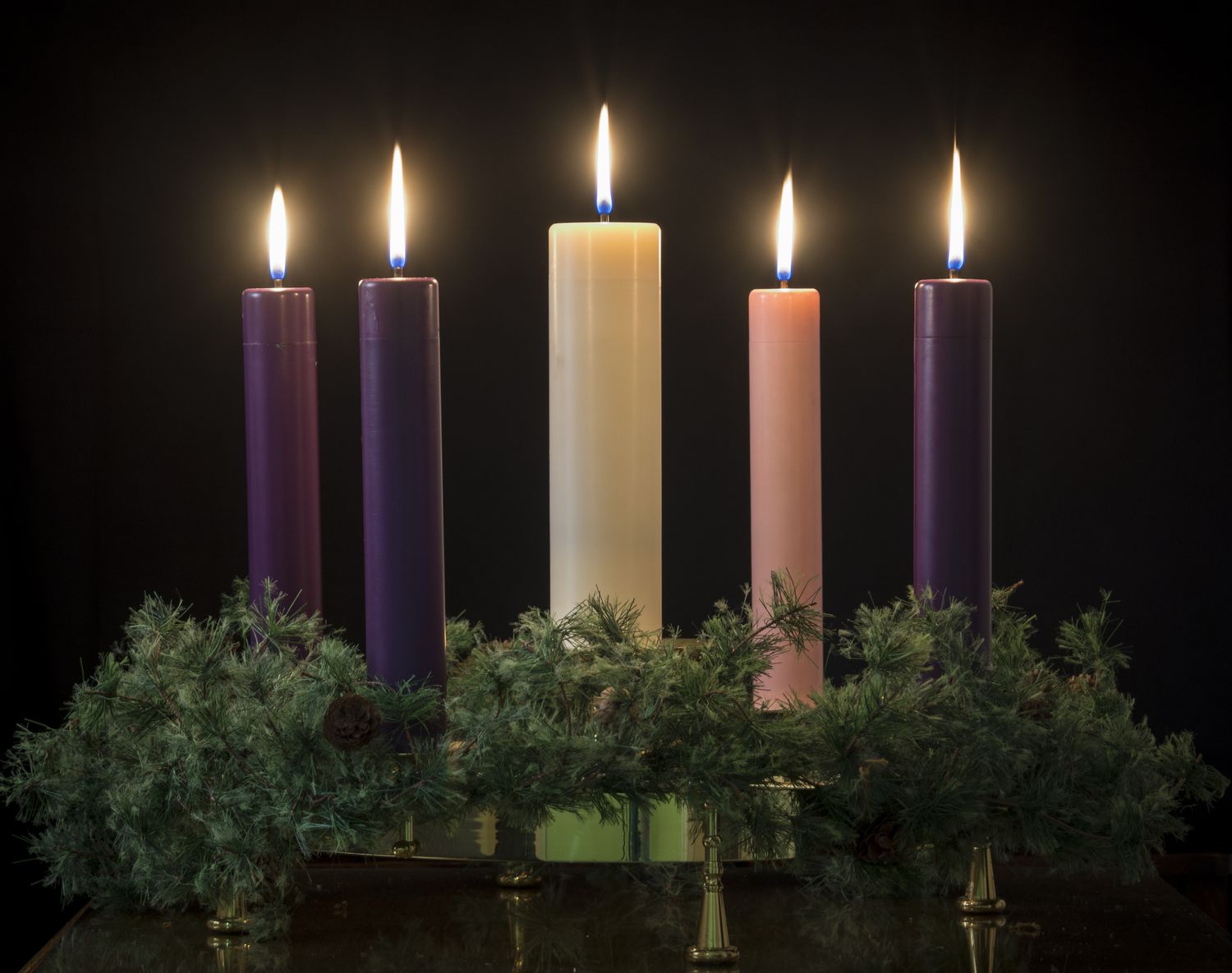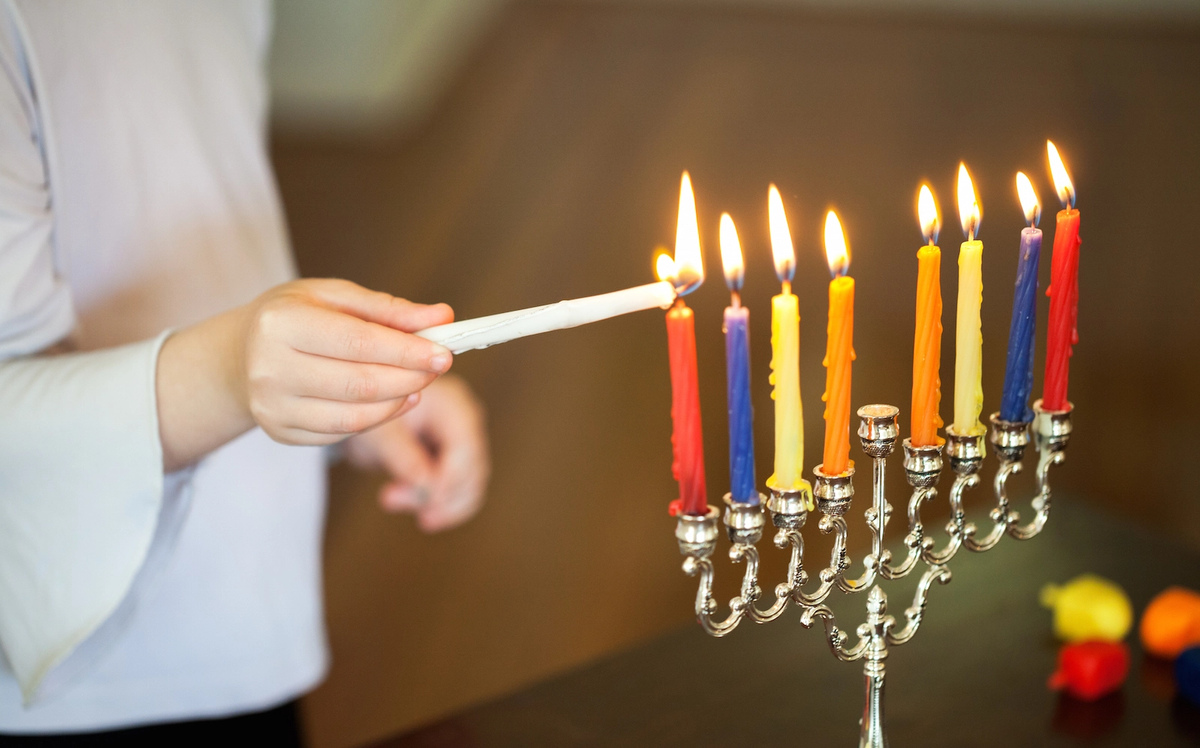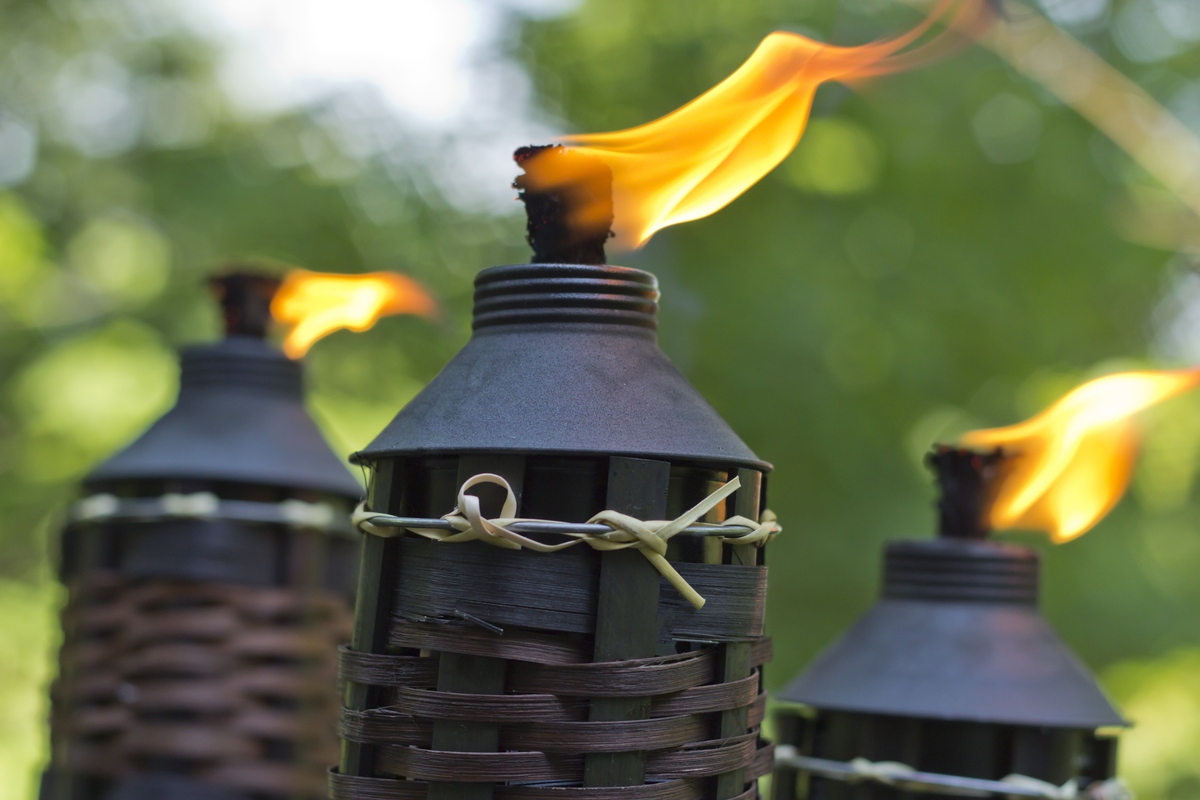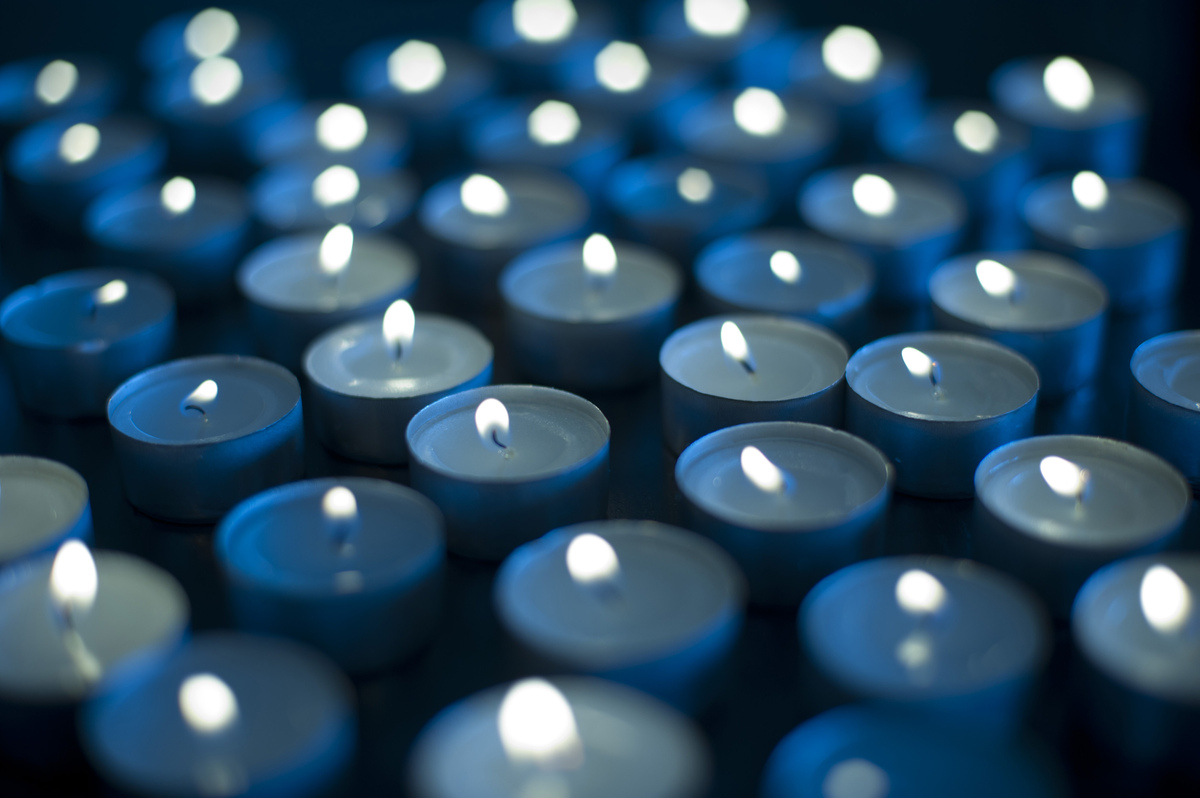

Articles
What Do Candles Symbolize
Modified: March 2, 2024
Discover the symbolic meanings of candles and their significance in various cultures and traditions. Read our articles to learn more about the symbolism of candles.
(Many of the links in this article redirect to a specific reviewed product. Your purchase of these products through affiliate links helps to generate commission for Storables.com, at no extra cost. Learn more)
Introduction
From cozy ambience to spiritual ceremonies, candles have played a significant role in various cultural traditions throughout history. Beyond their practical use as a source of light, candles also carry deep symbolic meanings. They are not just objects that emit a warm glow; they represent much more.
Candles have been used for centuries, dating back to ancient civilizations, and their significance has evolved over time. In this article, we will explore the rich symbolism behind candles and the various meanings they hold in different contexts.
Whether you are lighting a candle for relaxation, spiritual purposes, or simply to create a warm atmosphere, knowing the symbolism behind it can add a deeper understanding and connection to the experience.
Key Takeaways:
- Candles symbolize light, hope, and spiritual connection across cultures and traditions, offering warmth, comfort, and healing in both physical and emotional realms.
- The color of a candle holds symbolic meaning, adding depth to rituals and ceremonies, allowing individuals to align their intentions with the desired purpose.
Read more: What Do Altar Candles Symbolize
Historical Significance of Candles
The use of candles dates back thousands of years, with evidence of their existence found in ancient civilizations such as Egypt, Greece, and Rome. In these early times, candles were primarily made from tallow, a substance derived from animal fat.
Candles held immense practical value as a reliable and portable source of light, especially before the invention of electricity. They were used to illuminate homes, caves, and religious spaces during nighttime activities and rituals.
In addition to their functionality, candles also held symbolic significance in ancient cultures. They were often used in religious ceremonies and rituals as offerings to the gods or to evoke divine presence. The act of lighting a candle was seen as a form of communication with the spiritual realm.
During the Middle Ages, the production of candles expanded, and beeswax became a popular material due to its clean-burning properties and natural fragrance. This era introduced the use of candlesticks and chandeliers in grand cathedrals and palaces, adding an element of opulence to the lighting fixtures.
The Industrial Revolution brought significant advancements in candle production, with the introduction of machines that could mass-produce candles made from paraffin wax. This revolutionized the candle industry, making candles more accessible and affordable for the general population.
Today, candles continue to serve both practical and symbolic purposes. While electric lighting has become the norm, candles still hold a special place in our hearts and homes, as they evoke a sense of warmth, nostalgia, and tranquility.
The historical significance of candles, their role as a light source, and their symbolic value in religious and cultural practices have shaped our perception of these humble objects. Understanding the rich history behind candles allows us to appreciate their significance on a deeper level.
Spiritual and Religious Symbolism
Throughout history, candles have held deep spiritual and religious symbolism in various cultures and belief systems.
In Christianity, candles often symbolize the presence of God and are used in church ceremonies, such as the lighting of the Advent wreath during the Christmas season. The flickering flame represents the presence of the Holy Spirit and signifies light entering and dispelling darkness.
In Hinduism, candles are commonly used in religious ceremonies and as offerings to deities. They symbolize the presence of the divine and are believed to bring blessings and positive energy into one’s life.
In Buddhism, candles are used during meditation practices and rituals. The gentle, steady flame is seen as a representation of the inner light of enlightenment and spiritual awakening.
In Judaism, candles hold significance in religious rituals such as Hanukkah and Shabbat. The lighting of the Hanukkah menorah symbolizes the miracle of the oil that burned for eight days, while the Shabbat candles signify the start of the Sabbath and are lit to bring peace and sanctity into the home.
Similar to these major religions, candles also play a crucial role in other spiritual practices and belief systems, such as Wicca and Paganism. In these traditions, candles are often used to invoke specific energies, represent the four elements (fire, earth, air, and water), and enhance spellwork and rituals.
Overall, the spiritual and religious symbolism of candles is rooted in their ability to connect the physical and spiritual realms. Candles are seen as conduits that bridge the gap between the divine and human experience, providing a visual and symbolic representation of spiritual presence and energy.
Symbolism of Light and Illumination
One of the most fundamental symbolism associated with candles is that of light and illumination. Candles have long been a symbol of enlightenment, truth, and spiritual enlightenment.
The flame of a candle represents the spark of knowledge and wisdom. It is a metaphorical representation of the quest for truth and the illumination of the mind. The flickering flame captivates our attention and draws us towards introspection and self-reflection.
Candles have the power to bring light into darkness. They symbolize hope, guidance, and the ability to overcome obstacles. Lighting a candle in a dark room not only illuminates the physical space but also symbolizes the search for inner clarity and understanding.
Candles are often used in prayer and meditation practices to create a sacred space and invoke a sense of divine presence. The warm and gentle glow of a candle is believed to facilitate concentration, focus, and a deeper connection with the spiritual realm.
In a metaphorical sense, the symbolism of light also extends to knowledge and awareness. Candles represent the pursuit of truth, learning, and the expansion of consciousness. They call us to seek enlightenment and to shine a light on the mysteries and complexities of life.
Furthermore, candles can symbolize hope and optimism. They remind us that even in the darkest times, there is always a glimmer of light to guide us. Lighting a candle can serve as a powerful symbol of resilience, encouragement, and the belief that there is light at the end of the tunnel.
Symbolism of light and illumination goes beyond the physical presence of candles. It speaks to our desire for understanding, our longing for spiritual connection, and our innate capacity to seek truth and enlightenment. Whether used in religious ceremonies or personal meditation practices, candles serve as a constant reminder to embrace the light within and strive towards greater awareness and illumination.
Symbolism of Warmth and Comfort
Candles hold a special symbolism when it comes to warmth and comfort. The soft glow and gentle flickering of a candle flame create a cozy and inviting ambiance that can instantly transform a space.
Historically, candles have been used for their practical purpose of providing warmth in cold environments. In earlier times, when heating systems were not readily available, candles offered a source of heat that brought comfort during chilly nights. This symbolism of warmth has carried over to the present day, where candles are often associated with cozy and intimate settings.
Additionally, candles symbolize emotional and spiritual warmth. They have the power to create a soothing and calming atmosphere. The soft illumination and the delicate scent of scented candles can evoke feelings of peace, tranquility, and emotional well-being.
When we light a candle, it brings a sense of comfort and familiarity. It acts as a gentle reminder of home and the warmth of a hearth. Whether used during a relaxing bath, a cozy evening at home, or a meditation session, candles can create a sense of sanctuary and provide a refuge from the challenges of the outside world.
Candles also symbolize the warmth of connection and community. They are often lit during gatherings and celebrations to create an intimate and welcoming environment. Whether it’s a romantic dinner for two, a family gathering, or a festive occasion, candles enhance the sense of togetherness and create a cozy and inviting atmosphere for social interactions.
Moreover, the act of lighting a candle can have symbolic meaning for remembrance and honoring loved ones. Lighting a candle in memory of someone holds the symbolism of keeping their memory alive and bringing a sense of warmth from the deeper emotional connection we shared with them.
In summary, candles symbolize warmth and comfort in both a physical and emotional sense. Through their soft glow and inviting ambiance, candles create a cozy and nurturing environment, offering solace, relaxation, and emotional well-being. The symbolism of warmth and comfort associated with candles speaks to our innate desire for a sense of belonging, contentment, and emotional security.
Candles symbolize light, hope, and spirituality in many cultures and religions. They can also represent warmth, guidance, and remembrance.
Read more: What Do Yellow Candles Symbolize
Healing and Meditation Symbolism
Candles have long been associated with healing and meditation practices, carrying a deep symbolism in promoting relaxation, focus, and spiritual connection.
In the realm of healing, candles are often used as tools to create a calming and therapeutic environment. The soft glow and gentle flickering of a candle flame can have a soothing effect on the mind and body. The ambiance it creates helps to reduce stress, anxiety, and promote a sense of inner peace.
Candles are frequently incorporated into aromatherapy practices, where scented candles are used to enhance emotional well-being and relaxation. The combination of the subtle fragrance and the warm glow of the flame can evoke positive memories, alleviate tension, and promote overall healing.
When it comes to meditation, candles play a significant role in creating a focused and serene atmosphere. The act of lighting a candle before meditation signifies the transition from the busy external world to the inner state of calmness and introspection.
A single point of focus, such as a candle flame, can help to quiet the mind and deepen concentration. By fixating on the flame, practitioners cultivate mindfulness and a heightened sense of awareness. The flickering light symbolizes the impermanence of thoughts, allowing individuals to detach from the distractions of the mind.
Candles are also used in rituals and ceremonies centered around healing and spiritual growth. Whether it’s a reiki session, a chakra meditation, or a shamanic ritual, candles are often included to create an energetic space where healing can occur.
Furthermore, candles can symbolize the inner light and divine spark within each individual. They represent the illumination of one’s true self, bringing forth wisdom, intuition, and spiritual growth.
The healing and meditation symbolism associated with candles is deeply connected to the power of intention. When a candle is lit with a specific intention, such as healing, manifesting, or finding inner peace, it serves as a visual reminder of that intention, amplifying the energy and focus towards that purpose.
Candles hold a transformative energy that aids in healing, relaxation, and spiritual journeying. Their symbolism in healing and meditation practices serves as a gentle reminder of the importance of nurturing oneself, finding solace in stillness, and connecting with the innermost aspects of our being.
Symbolism of Rituals and Ceremonies
Candles hold a significant symbolism in various rituals and ceremonies, adding depth and meaning to these special occasions.
Rituals and ceremonies are often used to mark significant milestones, transitions, and important moments in life. Candles play a central role in these ceremonial practices by representing the sacredness and intention behind the ritual.
When a candle is lit during a ritual, it symbolizes the initiation of a sacred space and the invocation of divine energy. The act of lighting the candle is a deliberate and conscious action, setting the tone for the ceremony and inviting spiritual presence.
Candles also serve as a representation of spiritual journeying and symbolism. They can symbolize the transformation of energy, the release of the old, and the welcoming of new beginnings.
Various ceremonies, such as weddings, funerals, and religious observances, incorporate candles to add layers of meaning and significance. In a wedding ceremony, the lighting of unity candles symbolizes the merging of two individuals and families. The flame represents the eternal love and commitment that the couple will share throughout their lives.
Funeral ceremonies often include candles as a way to honor and remember the departed. The flame serves as a reminder of their enduring spirit and the light they brought into the lives of others.
Religious ceremonies, such as baptisms, confirmations, and blessings, incorporate candles to represent divine presence, purity, and enlightenment.
In addition to these formal rituals, candles are also used in personal rituals and ceremonies, such as intention-setting, releasing negativity, and manifestation. Lighting a candle during these rituals represents the focus and dedication to the desired outcome.
The symbolism of rituals and ceremonies is deeply intertwined with the power of intention, creating a sacred space and calling forth desired energies. Candles hold the space for these intentions, acting as a beacon of light and spiritual energy throughout the ceremony.
Whether it is a grand celebration or a personal ritual, the use of candles in rituals and ceremonies adds a layer of symbolic depth, amplifying the intentions, emotions, and spiritual connection of those involved.
Symbolism in Cultural Traditions
Candles have a rich history of symbolism in cultural traditions around the world, each carrying its unique significance that reflects the values, beliefs, and practices of a particular culture.
In Mexican culture, candles play a prominent role in the celebration of Día de los Muertos (Day of the Dead). Families light candles at home altars and grave sites to guide the spirits of their loved ones back to the world of the living. The candles symbolize remembrance, connection, and the welcoming of ancestral spirits.
In Hindu culture, candles and oil lamps, known as diyas, are part of religious celebrations and festivals, such as Diwali. The light emitted from these candles symbolizes the victory of light over darkness, good over evil, and knowledge over ignorance.
In Chinese culture, the use of red candles during the Lunar New Year celebrations represents fortune, luck, and prosperity. The vibrant red color is believed to ward off evil spirits and bring positive energy for the coming year.
In the Japanese art of flower arrangement, known as Ikebana, candles are sometimes used as a symbolic element. The candles represent the fleeting nature of beauty, as the flame eventually consumes the candle, reminding practitioners to appreciate the present moment.
In African cultures, candles are commonly used in rituals and ceremonies, such as ancestral worship and initiation rites. The candles serve as a source of illumination and symbolize spiritual connection, guidance, and protection.
Native American cultures often incorporate candles in their ceremonies and rituals, such as sweat lodges and sacred pipe ceremonies. The candles represent the presence of the Great Spirit, the illumination of the sacred space, and the connection between the physical and spiritual worlds.
These examples highlight just a few of the many cultural traditions where candles hold symbolic significance. The use of candles in cultural rituals and traditions is a way of honoring ancestral customs, expressing spirituality, and connecting with the collective wisdom and experiences of generations past.
Symbolism in cultural traditions adds depth and meaning to these practices, allowing individuals to reconnect with their heritage, express devotion, and partake in the rich tapestry of human history and spirituality.
Candle Colors and Their Symbolic Meanings
The color of a candle holds its own unique symbolism and adds another layer of meaning to the candle’s presence and purpose. Different candle colors are often chosen based on the desired intention or the symbolism associated with that particular color.
Here are some common candle colors and their symbolic meanings:
- White: White candles symbolize purity, clarity, and spirituality. They are often used in rituals and ceremonies that involve purification, healing, and peace.
- Red: Red candles symbolize energy, passion, and celebration. They are often used in love rituals, fertility ceremonies, and to honor the element of fire.
- Yellow: Yellow candles symbolize intellect, creativity, and joy. They are often used in rituals to stimulate mental clarity, enhance communication, and invoke positive energy.
- Green: Green candles symbolize abundance, healing, and growth. They are often used in rituals related to prosperity, fertility, and the natural world.
- Blue: Blue candles symbolize calmness, peace, and spiritual connection. They are often used in rituals related to meditation, intuition, and communication with higher powers.
- Purple: Purple candles symbolize spirituality, wisdom, and spiritual protection. They are often used in rituals associated with psychic abilities, spiritual insight, and connecting with the divine.
- Pink: Pink candles symbolize love, compassion, and affection. They are often used in rituals related to self-love, friendship, and romantic relationships.
- Orange: Orange candles symbolize creativity, courage, and enthusiasm. They are often used in rituals to boost inspiration, motivation, and positive outlook.
- Black: Black candles symbolize protection, banishing negativity, and transformation. They are often used in rituals related to letting go of the old, mourning, and spiritual cleansing.
It’s important to note that the symbolic meanings of candle colors can vary depending on cultural and personal interpretations. It is essential to trust your intuition and choose candle colors that resonate with your intentions and beliefs.
The selection of candle colors in rituals, ceremonies, and personal practices adds a visual and symbolic element that aligns with the desired purpose. Whether used individually or in combination, candle colors deepen the symbolism and intention, creating a more potent and meaningful experience.
Read more: What Do White Candles Symbolize
Conclusion
Candles hold a profound symbolism that transcends their practical purpose of providing light. They carry a rich history and cultural significance, representing various aspects of human existence, spirituality, and emotional well-being.
From their historical significance as a source of light in ancient civilizations to their spiritual and religious symbolism in various faith traditions, candles have played a central role in rituals, ceremonies, and personal practices throughout time.
The symbolism of candles encompasses a wide range of meanings, including light and illumination, warmth and comfort, healing and meditation, rituals and ceremonies, and cultural traditions. The color of a candle adds another layer of symbolism, allowing individuals to choose the appropriate color that aligns with their intentions and desires.
Whether used for relaxation, prayer, meditation, or to create a welcoming ambiance, candles invite us to slow down, connect with our inner selves, and find solace amidst the hustle and bustle of life.
As we light a candle, we participate in a timeless tradition that connects us with generations past and unites us with cultures around the world. The act of lighting a candle holds power, intention, and symbolism.
So the next time you strike a match and illuminate a candle’s flame, take a moment to appreciate the symbolism it holds. Reflect on the light it brings to your space and the deeper meaning it represents in your life.
Candles teach us the beauty of simplicity, the importance of presence, and the significance of symbolism. They remind us to seek light in the darkness, find warmth in connection, and embrace the serenity that comes with their gentle glow.
Let the symbolism of candles guide you on your spiritual journey, infuse your rituals with meaning, and create a sacred space wherever you go. May the flickering flame serve as a constant reminder of the powerful symbolism that candles hold, and may it illuminate your path towards greater understanding, peace, and inner transformation.
Frequently Asked Questions about What Do Candles Symbolize
Was this page helpful?
At Storables.com, we guarantee accurate and reliable information. Our content, validated by Expert Board Contributors, is crafted following stringent Editorial Policies. We're committed to providing you with well-researched, expert-backed insights for all your informational needs.














0 thoughts on “What Do Candles Symbolize”